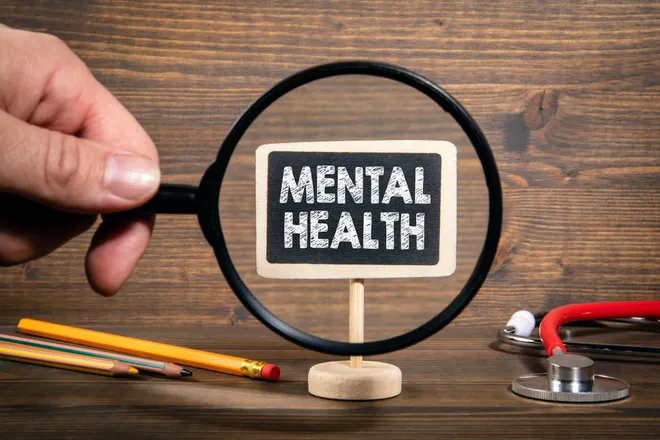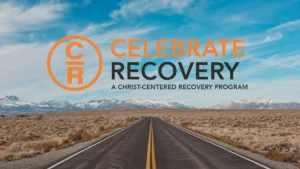Editor’s Note: The recent report from the Tennessee Department of Mental Health and 47% jump in Tennessee teen suicides — I can’t help but think “WTH is going on in our society?” Sure, we can crunch the numbers, seek more studies, pass legislation and spend more millions —yet, the problem has become worse. But, what if possibly we’ve been looking at this whole mental health issue backwards?
After speaking to many former addicts and mental health experts. Here’s what’s been theorizing in my head lately. We’ve spent decades following Freud’s playbook—with all the heavy focus on individual psychoanalysis and digging into personal trauma. Yes, there’s no doubt trauma is real. I’m not saying it isn’t. But what if Alfred Adler had it right all along? Adler was the guy who said our mental wellness comes from feeling like we actually matter to the people around us. I am no way an expert in the areas of mental health. But this is an issue I’ve focused much of my many years on—as well as addiction. We all need to feel connected to others in some way.
Did Adler get it right? Back in the early 1900s, when most therapists were obsessed with digging into people’s childhood trauma, Alfred Adler was asking a different question: What if the real problem isn’t what’s wrong with you, but how disconnected you are from everyone else?
Adler was a doctor who started what became known as Individual Psychology, though honestly, that name’s a bit misleading since his whole thing was about community. While Freud and his followers were having patients lie on couches talking about their mothers, Adler was out there working with entire families and groups of people. He figured out something that seems obvious now but was pretty radical then—people get sick when they don’t feel like they belong anywhere.
The man was way ahead of his time. He was doing family therapy before anyone called it that, bringing mental health conversations into schools and neighborhoods, and basically arguing that if you want to help someone’s mental health, you better look at their whole world, not just their personal hang-ups. He believed people could actually change their communities for the better, which was a pretty optimistic take for a guy dealing with some seriously troubled folks.
I just finished reading Jonathan Haidt’s “The Anxious Generation,” and, in my opinion, it connect the dots. Haidt makes this case that smartphones and social media haven’t just changed how kids communicate—they’ve literally rewired how they develop as human beings. Instead of learning to navigate real relationships with all their messy ups and downs, kids are stuck in these artificial comparison loops that never end well. The anxiety levels he documents are off the charts.
Instead of just reporting another tragic statistic, we should be asking harder questions about why our communities are failing these kids.
As I write this, I’m on a long-awaited vacation. This is the first time we’ve been to the beach here in Gulf Shores in 15-20 years. Our two grandbabies are with us. It was uplifting to see my son Preston and his wife Morgan and the grandchildren arrive at 3 a.m. this morning. Grace, our 2½-year-old, couldn’t stop talking about wanting to see the beach. She went to sleep at 4 a.m. and woke up at 6 asking, “Mimi, can we go to the beach?” She was so excited to see the ocean and beach for the first time in her young life. There’s no doubt that the water, beach, and ocean are therapeutic.
I realize I’m covering a lot of ground here, but as you know mental health is a very complicated issue. I ran across famous rat experiments from the 1970s, but the real story is way more interesting than most people realize. Scientists put rats in cages and gave them two water bottles—one with plain water and another laced with heroin or cocaine. Sure enough, the rats went crazy for the drugged water and kept using it until they died. For years, everyone pointed to this as proof that addiction was just about the chemical hook of drugs. Case closed, right?
But then a guy named Bruce Alexander came along and said, “Wait a minute—what if the problem isn’t the drug, but the cage?” He created what he called “Rat Park,” basically a rat paradise with plenty of space, other rats to socialize with, tunnels to explore, and things to do. When he put rats in this environment and gave them the same choice between plain water and drug water, something amazing happened. The rats mostly ignored the drugs. Even rats that had been addicted in the isolated cages got clean when they were moved to the rat paradise. The lesson hit like a lightning bolt: it wasn’t really about the substance—it was about connection, community, and having a life worth living. When you think about what our teenagers are dealing with today, stuck in their rooms scrolling through social media instead of building real relationships, you start to wonder if we’ve built them their own version of those lonely cages.
The solutions shouldn’t be too complicated, even if it’s hard to implement. We need to get these kids off their phones more often and into real relationships where they feel valued and purposeful. Tennessee could lead the way on this.
____________________________________________________________________
*Information for this article is from a recent report from Tennessee Department of Mental Health
Tennessee Faces Alarming 47% Surge in Youth Suicides Over Five Years
Tennessee is grappling with a devastating mental health crisis as new data reveals youth suicides have increased by 47% statewide over a five-year period, according to the Suicide Prevention in Tennessee 2025 Annual Report. This stark increase underscores an urgent need for expanded mental health resources and prevention strategies across the state.
When God Came Knocking: The Astonishing Story of Troy Ross
The Scope of the Crisis
The dramatic rise in youth suicide rates represents one of the most pressing public health challenges facing Tennessee communities today. This 47% increase over five years signals that existing support systems and intervention programs may be insufficient to address the growing mental health needs of the state’s young people.
The data comes at a time when mental health professionals nationwide have been sounding alarms about deteriorating youth mental health, particularly following the disruptions and isolation experienced during the COVID-19 pandemic. Tennessee’s figures suggest the state is experiencing this crisis more acutely than many other regions.
Celebrate Recovery at Murfreesboro Family Worship Center
Contributing Factors
Mental health experts point to several interconnected factors that may be driving this troubling trend:
Social Media and Digital Pressures: The constant connectivity and comparison culture fostered by social media platforms can exacerbate feelings of inadequacy and isolation among teenagers. Cyberbullying and online harassment have become increasingly prevalent concerns.
Academic and Social Pressures: Rising academic expectations, college admission competition, and social pressures to succeed can create overwhelming stress for young people who may lack adequate coping mechanisms.
Access to Mental Health Services: Rural areas of Tennessee, in particular, face significant shortages of mental health professionals, making it difficult for struggling youth to receive timely intervention and treatment.
Economic Stressors: Family financial pressures and economic uncertainty can create additional stress in households, affecting the mental health of all family members, including teenagers.
Substance Abuse: The ongoing opioid crisis and increased availability of other substances can compound mental health struggles and impair judgment during crisis moments.
The Need for Comprehensive Response
The alarming statistics demand a multi-faceted approach involving schools, healthcare systems, families, and communities working together to address this crisis.
School-Based Interventions: Educational institutions serve as critical frontlines in suicide prevention. Enhanced counseling services, mental health education programs, and teacher training to recognize warning signs are essential components of an effective response.
Healthcare System Improvements: Expanding access to mental health services, particularly in underserved rural communities, remains a priority. This includes increasing the number of licensed mental health professionals and improving insurance coverage for mental health treatment.
Family and Community Support: Parents, guardians, and community members need education about warning signs and resources for getting help. Reducing stigma around mental health treatment is crucial for encouraging young people to seek support.
Crisis Intervention: Robust crisis hotlines, emergency mental health services, and coordinated response systems can provide immediate support during mental health emergencies.
Warning Signs and Resources
Recognizing the warning signs of suicide risk is crucial for parents, teachers, and peers. These may include:
– Persistent sadness or mood changes
– Withdrawal from friends and activities
– Changes in sleeping or eating patterns
– Declining academic performance
– Increased risk-taking behavior
– Expressions of hopelessness or worthlessness
– Talking about death or suicide
Immediate Help Available: Anyone experiencing suicidal thoughts or concerned about someone else should contact the 988 Suicide & Crisis Lifeline by calling or texting 988. This free, confidential service provides 24/7 support and connects callers with local crisis centers.
Looking Forward
The 47% increase in youth suicides over five years represents more than statistics—each number represents a young life lost and families and communities forever changed. However, suicide is preventable, and evidence-based interventions can make a significant difference.
Tennessee’s response to this crisis will require sustained commitment from state and local governments, healthcare systems, schools, and communities. Increased funding for mental health services, comprehensive prevention programs, and continued data collection and analysis will be essential for reversing this devastating trend.
The release of the Suicide Prevention in Tennessee 2025 Annual Report serves as both a wake-up call and an opportunity for coordinated action. With proper resources, intervention strategies, and community support, Tennessee can work to ensure that struggling young people receive the help they need before reaching a point of crisis.
The state’s youth deserve nothing less than a comprehensive, compassionate response to this mental health emergency. The time for action is now, before more young lives are lost to this preventable tragedy.
*If you or someone you know is struggling with suicidal thoughts, help is available. Contact the 988 Suicide & Crisis Lifeline by calling or texting 988, or visit your nearest emergency room. For additional resources, contact your local mental health provider or school counselor.*















Leave feedback about this